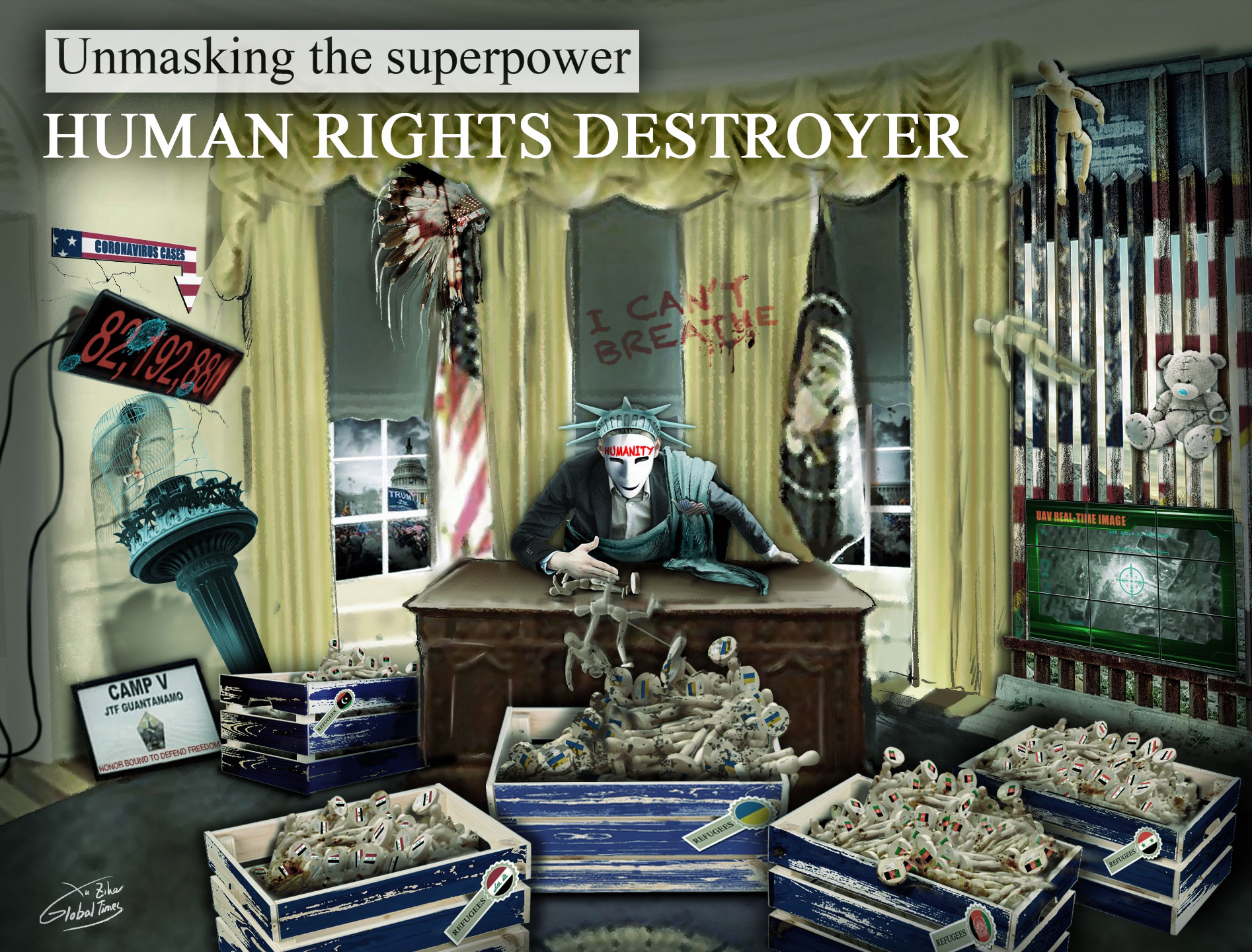Human rights destroyer
Since the military conflict between Russia and Ukraine began, the international community has grown increasingly aware of the roles the US and NATO have played behind the crisis.
From lip service on the Ukraine refugee issue to a spotty overseas human rights record; from imposing sanctions on "disobedient countries," to coercing other nations to pick sides… the US has acted like a "Cold War schemer," or a "vampire" who creates "enemies" and makes its fortunes from pyres of war.

"Why did the United States resettle only 12 Ukrainian refugees in March?" Reuters questioned in a headline on April 12.
More than 4 million people have fled Ukraine to neighboring countries since Russia launched special military operations on February 24, according to United Nations data, setting off Europe's most volatile refugee crisis since the end of World War II, Reuter reported.
Facing growing criticism and pressure from refugee advocates, the Biden administration said on March 24 that the US would use "the full range of legal pathways" to accept up to 100,000 Ukrainians fleeing the war.
This figure stands in stark contrast to the role of the US in stoking the flames in the Russia-Ukraine conflict.
For decades, the US has, in fact, repeatedly waged wars abroad that have resulted in numerous refugees. Yet when it comes to resettling them, the US strategically passes the buck. The plight of the refugees shows that the US, while branding itself as a so-called "defender" of human rights, is actually their greatest "violator," observers said.
"We're going to welcome Ukrainian refugees with open arms if, in fact, they come all the way here," was a promise made by US President Joe Biden and Vice President Kamala Harris, repeated by US Secretary of State Antony Blinken and White House Press Secretary Jen Psaki. Yet the US, the architect of the conflict between Russia and Ukraine, has accepted dismally few refugees.
Reuters reported that the US admitted 514 Ukrainian refugees between January and February, according to State Department data, with only 12 having been resettled in March as the war intensified and the number of Ukrainians fleeing skyrocketed. This means that the number of Ukrainian refugees admitted by the US was only five in late March, when President Biden pledged the US would accept up to 100,000 on March 24.
Perhaps from the start, the US was prepared to leave the resultant refugee crisis to Europe. Jen Psaki had said on March 10 that the administration believes the "vast majority" of refugees will want to remain in neighboring countries where many have family, friends, and former employers.
The US State Department said that it will work with the United Nations to bring Ukrainian refugees to the US if they lack protection in Europe, emphasizing that resettlement to the US would not be a quick process.
The US' lip service can also be reflected in its pathway to accepting refugees. Reuters reported that the pathways include the US refugee resettlement program, which provides a route to citizenship, as well as existing visa avenues and a relief program known as "humanitarian parole," which allows people into the country on a temporary emergency basis.
Under the "humanitarian parole," getting a visa is not an easy thing as applicants must demonstrate their trip is for a bona fide purpose, they will stay for a limited time, they can cover their expenses, and have a place outside the US and other binding ties which will ensure their eventual return home, conditions obviously difficult for many refugees to meet, Forbes reported on April 10.
President Biden has raised the national refugee cap on admissions to an 125,000 for 2022. But six months into the government's fiscal year, the US has accepted fewer than 9,000.
At that pace, it's impossible to imagine the administration's recent promise would be met, one Washington Post opinion piece said.













